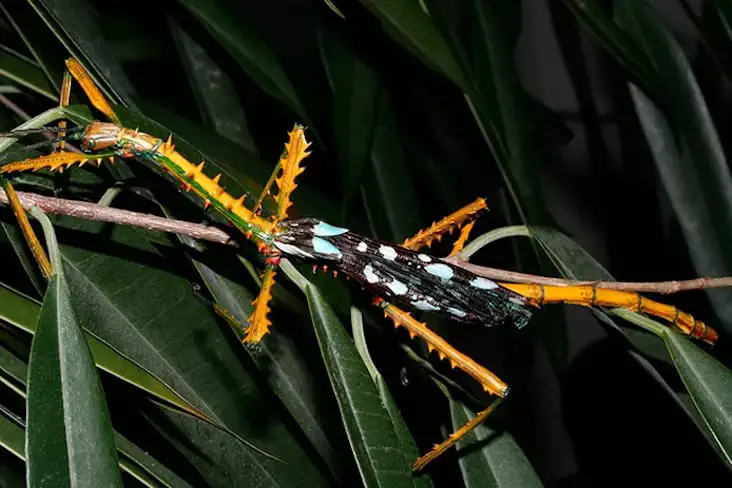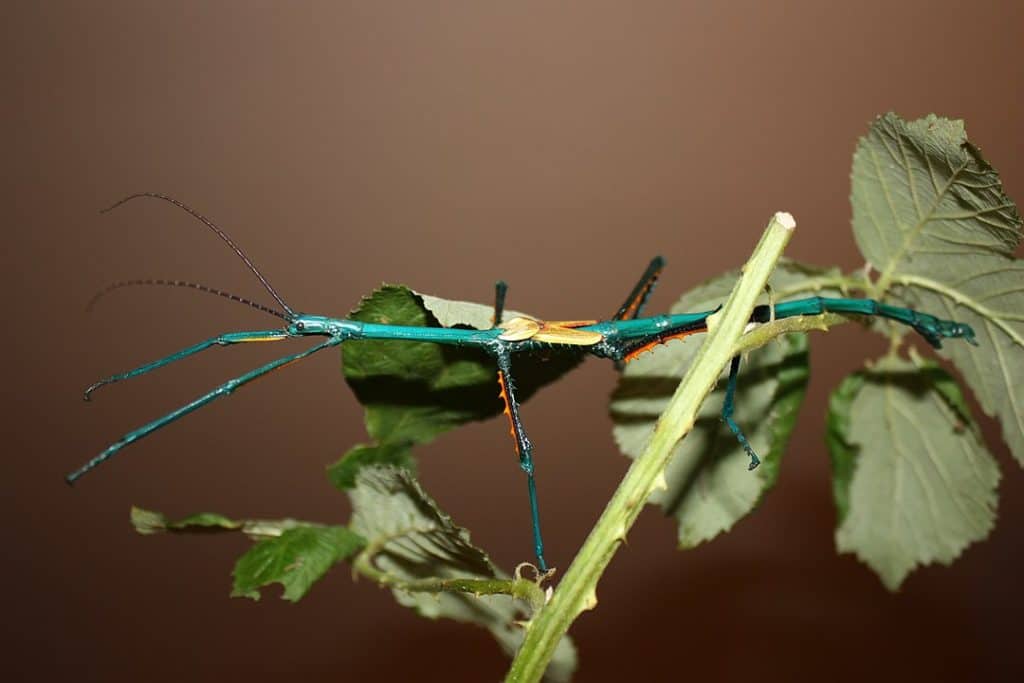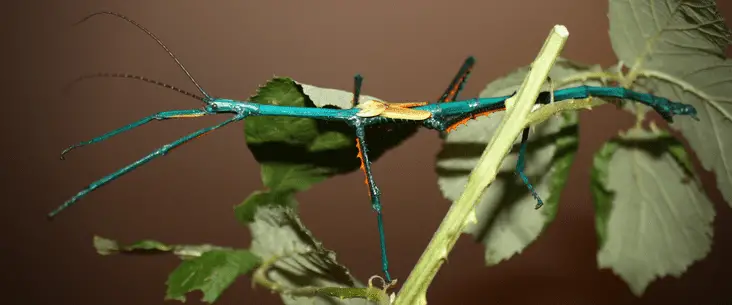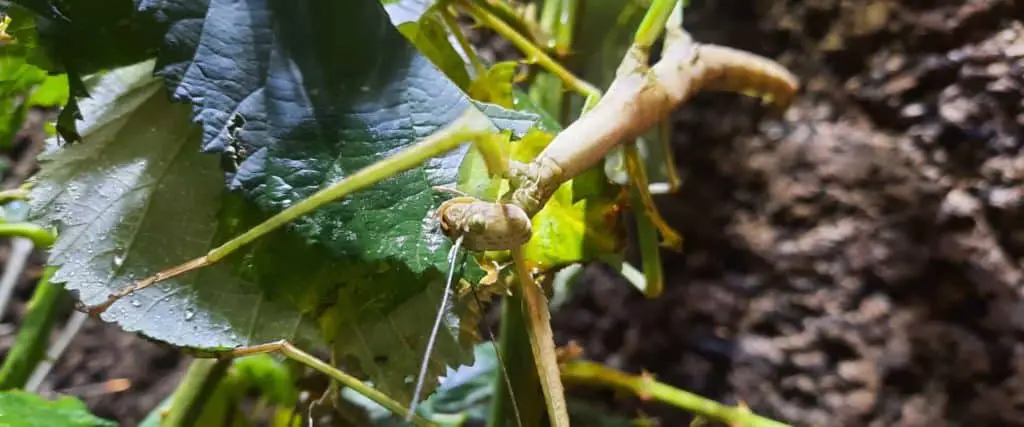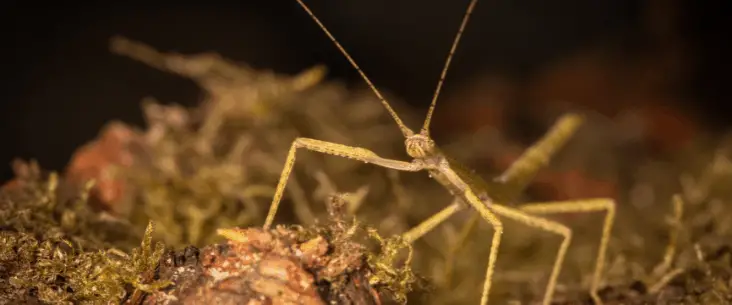Stick insects are amazing creatures and are among the most charismatic animals. There are over 3000 known species in the world. Stick insects are well-known for their bizarre shapes and highly developed camouflage. If you come across one you are lucky. They are hard to spot and are most active during the night. With daylight, they sit still and you will walk by them quite easily without noticing it is sitting in plain sight. Stick insects have become masters of tricks. But these fascinating animals have more secrets. In this article, we will tell you 15 surprising facts about stick insects that make them even more fascinating.
Did you know that?
1. New stick insects are still being discovered
We already mentioned that there are over 3000 different stick insects species, but regularly new species are discovered. Because of their well-developed camouflage and most common habitat of the dense tropical forest they are hard to find. Even as recent as 2018 there were 5 different new species found. Some scientists guess that there are more than 4000 different stick insect species.
2. Stick insects are the world’s longest insects
The largest stick insect species is Phryganistria chinensis and has a body length of 38.2 cm and when the forelimbs are stretched out even a length of 62.4 cm. What makes it even more bizarre is that this species is only discovered recently in 2014. That such a large stick insect can be hidden for humans for such a long time. The previous record-holder for longest stick insect was Phobaeticus chani, also known as Chan’s megastick. With a body length of 36 cm and with stretched forelimbs even 56.7 cm it is a real giant. No wonder that stick insects are the longest insects in the world.
3. Stick insects goes by many names
Stick insects are called by numerous names. Besides stick insects, they are also called stick bugs, walking sticks, bug sticks, ghost insects, phasmatodeans and phasmids. The name phasmids is derived from the Ancient Greek φάσμα phasma, meaning apparition or phantom. This refers to the fact that they look like a remarkable appearance of vegetation while in fact, they are animals.
Leaf insects, which are also called leaf bugs or walking leaves, also belong to the phasmid family. These animals look, as the name suggests, more like leaves than sticks.
4. Stick insects can reproduce without males
Not all, but some stick insects have a fascinating way to produce offspring called parthenogenesis. It means that a female can produce offspring without the need for a male or sexual reproduction. Young of these unfertilized eggs develop perfectly into adult stick insects. Because these young are exact copies of the mother, all young are female as well.
Parthenogenesis is rare in the animal world and only a tiny part of species are able to reproduce in this way. Most of these species are small invertebrates such as ants, bees, wasps and aphids. However, it is also observed in more than 80 vertebrate species such as sharks, snakes and lizards. Sometimes this form of reproduction is called “virgin births”.
This extensive article from national geographic explains thoroughly the phenomenon of parthenogenesis.
5. Stick insect eggs look like seeds
Did you ever looked closely to stick insect eggs. They are hard to find because they are camouflaged as seeds. Another trick of stick insects. Buy resembling eggs as seeds predators don’t notice them. Many predators do like a tasty egg, but when they look like seeds they don’t do any effort. Every stick insect species has its own distinctive shape of egg ‘seed’. Because many stick insects just simply drop eggs on the ground, they are hardly noticed by other animals.
In a more recent research scientists had the hypothesis that maybe birds help to disperse the eggs over a larger area like they do with normal plant seeds. Although the results are not conclusive, it is still believed that birds play a role in carrying eggs over a larger distance, and some eggs have survived the bird’s digestive tract.
6. Stick insects are not completely defenseless
Stick insects don’t use passive camouflage alone. Many species have developed different tactics to scare off predators. Many stick insects will wave and rock like a twig or leaf waving in the wind. But there is even more. Other stick insects have large thorns on their body and hind legs, and when a predator comes too close, they will snap with their legs towards the predator inflicting at least some pain. Others will regurgitate a nasty substance that will create a bad taste.
Another defence by some species is even more bizarre. Like the black beauty stick insect, they can spray some sort of tear gas towards the attacker to make it go away. Stick insects have developed their defensive trick box definitely to the next level.
7. Some stick insects can fly
Did you know that some stick insects can fly? Yes, they do. But it is only the males that can fly, and not all species do. Males have the ability to fly in search of mates.
But many stick insects that have wings don’t use their wings to fly but have another function. Their wings are often underdeveloped but have much more colour. At least, when they are not folded. They can scare off predators, make a lot of noise (stridulation) or confuse predators by showing colours and let them disappear again.
Related read: Do Stick Insects Fly? A Look At Their Use Of Wings
8. Stick insects can be found almost anywhere
Amazingly stick insects can be found almost anywhere on this planet. They have colonized every corner of the world except Antarctica. But they are most commonly found in tropical and subtropical forests. On the island of Borneo (Indonesia) alone live already more than 300 species of stick insects, which makes it the richest place of stick insects found in the world.
Their natural habitat ranges from high to low altitudes and temperate and tropical climates. They always live close to trees and bushes, although some species can be found in grasslands, living entirely of grasses.
9. Not all stick insects stay brown or green
Most stick insects have brown or green camouflage, but there are some stick insects that evolved in very bright coloured species. Especially on the island of Madagascar live some of the most colourful species like the recently discovered Achrioptera maroloko and Archrioptera manga.
Why these stick insects have developed in such a colourful way is not entirely clear, but scientists believe it has something to do with the romance to females or scare off predators. With many insects, bright colours mean that these insects are toxic and predators better avoid these insects.
10. Stick insects can regenerate lost limbs
Stick insects have the ability to regenerate lost limbs when juvenile. With every moult, they can slowly regenerate the leg until fully regrown. But did you know that break off a leg is one of these insects defence mechanisms to escape predators? When a bird or other predator grabs its leg, a stick insect can still make an easy escape by rejecting its leg by its special joint. Some stick insects can even force themselves to moult again to regenerate a lost leg.
11. Stick insects have been a model for human development
Although there is much to discover and learn about stick insects, these wonderful creatures have been a model for several human developments. One example can be found in the movie Master and Commander with Russel Crowe, where they learn how camouflage works and can be used in sea warfare. Another example is the robot Hector, a giant stick insect robot that walks like a stick insect. Scientists discovered that each leg can be moved independently and have its own function. By using this concept robot Hector can move over many different terrains and constantly adapt to different surfaces.
12. Some stick insects are threatened with extinction
Although with many and well-camouflaged, some stick insects are threatened with extinction. Oftentimes stick insects have colonized a very small niche and are heavily dependent on specific plants or conditions. With the introduction of invasive pest species, some stick insects are on the brink of extinction.
One example is the black beauty stick insect, which nowadays is commonly kept as a pet. This beautiful black species with yellow eyes and pink-red wings only exhibit a tiny space in Peru. With such a small niche and fast pacing habitat destruction and pollution, this stick insect species is quite vulnerable.
The story of the Lord Howe Island Stick Insect is even worse. This species was once plentiful in the forested area of one specific island near the coast of Australia, Lord Howe Island. But by introducing black rats from ship trades this stick insect quickly become highly threatened and was even thought to be extinct. By amazed scientists, this species knew to survive on a tiny volcanic rock in the sea about 20 kilometres from Lord Howe Island. Now there is a breeding program with a lot of success that makes this wonderful species survive and hopefully being reintroduced in its natural habitat.
13. Stick insect eggs attract ants
Some ants collect stick insect eggs and carry them back to the nest. Stick insect eggs have a small capsule that ants really like. After eating this capsule, they dump the egg onto a waste pile. Now, the ants don’t damage the eggs and the embryo slowly develops until it hatches. This symbiosis benefits both the ants and the stick insect nymph. Ants have a nice meal and the nymph has the safety of the ant colony.
14. Some stick insects have very specific host plants
Stick insects can have very specific food wishes and some stick insects can only be found on a single host plant, the plant that they feed on and or lay eggs on. Mostly seen with caterpillars, also stick insects have one or several host plants that they use to survive. Other stick insects are much more general feeders and feed on many different plant leaves. These stick insects are often better to keep as pets because they are easier to switch onto the food we can provide such as bramble and oak leaves.
But, did you really say pet? Yes, many stick insects can be kept as pets.
15. Stick insects are great pets
Stick insects make great pets. There are around 300 different species that are kept as pets by humans. The most popular species are the Indian stick insect (Carausius morosus) and the giant prickly stick insect (Extatosoma tiaratum). These animals are easy to keep, don’t require much space and time, and as you can read above are fascinating species. I think these species are even better than dogs and cats, and they make great pets for kids or school classes as well.
Maybe stick insects are also a great pet for you! I encourage you to read the article I’ve written that introduces stick insects as pets. There you can learn about them and maybe start searching for your own pet stick insect.
Share this page!

